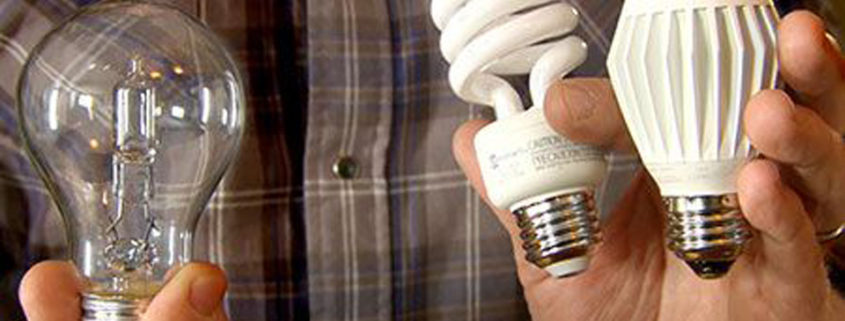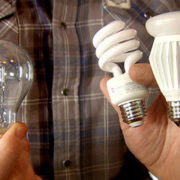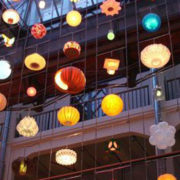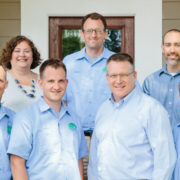Understanding your Lightbulb options
In the last several years lightbulb choices have changed dramatically. It can be hard to figure out what type of lightbulb is best for your lighting fixture and needs. Here is a brief explanation about of several of the most popular light bulbs and some of the pros and cons of each. It is important to note that when you are purchasing any lightbulb, please make sure to read the box for specific usage information about that particular bulb.
Incandescent
Incandescent lightbulbs have been around since the time of Thomas Edison. These lightbulbs don’t last very long (1000 to 2000 hours) and are not very energy efficient, but they provide a warm glow that many people appreciate. They are also the least expensive lightbulbs to purchase, but the most expensive to operate
Tungsten-Halogen
Halogen bulbs produce a whiter, more intense light. They are usually used for decorative or accent lighting. These bulbs are 2 times more efficient than incandescent bulbs and last 2 to 4 times longer than the standard incandescent bulb. Halogens are available in a variety of light spreads, including wide flood, narrow flood, and spot light.
Compact Fluorescent Lamp (CLF) Bulbs
CFL Bulbs are similar in color to Incandescent bulbs. They are 4 times as efficient and last up to 10 times longer. They are however much more expensive to purchase and sometimes take longer to light. Not all of these bulbs are appropriate for indoor and outdoor use.
Tubular Fluorescent fixtures
These fixtures are most commonly used in Commercial lighting however they do great at lighting up large spaces for very little. They are very efficient but they only work in fixtures that have a ballast. They can last for up to 20,000 hours. They are available in a variety of sizes and shapes, but they do require specific fixtures.
Light Emitting Diodes (LED)
LED lights are the most recent addition to the general household lighting options. They are now available for use in some standard light fixtures. LED lights use very little energy, produce a bright white light and last very long. They do not contain Mercury so they are safe to dispose of in the garbage and they tend to be very resistant to vibration damage. They are more expensive to purchase and it is important to make sure that they are well ventilated to dissipate the heat they produce.








Leave a Reply
Want to join the discussion?Feel free to contribute!